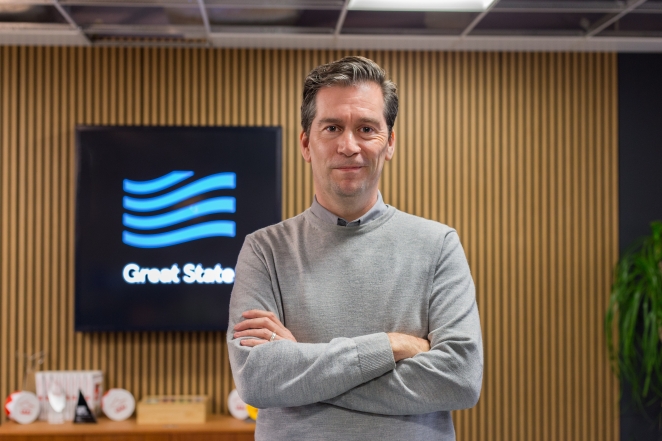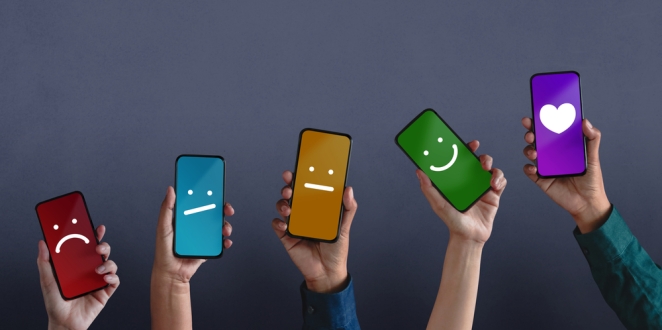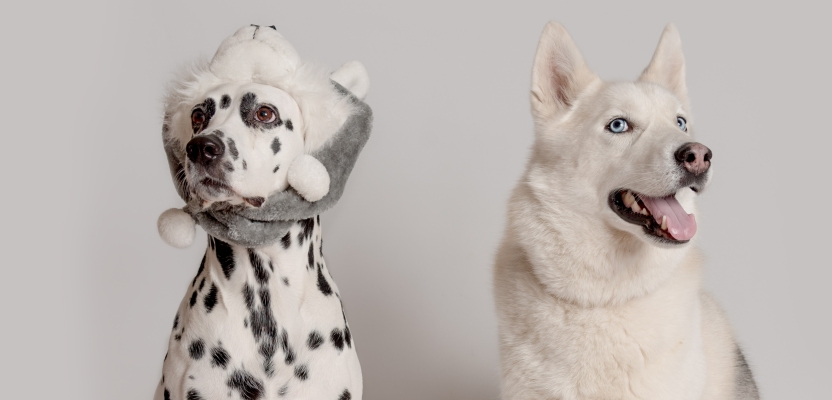UX design functionality is becoming a dead end for brands and platforms seeking to differentiate as being told exactly how to design something doesn’t leave much room for creative expression – so how can brands still create competitive advantages through intelligent design?
First, we saw Snapchat stories, then came the success of TikTok and more recently, BeReal – all of which have now seen their designs integrated into leading social media giant’s platforms such as Instagram reels and YouTube shorts. To this end, social media apps are increasingly converging on both design and functionality.
Great State Creative Director Matt Powell believes that tech design is in danger of blandification, due to the increasing tendency of companies to copy the functionality of new entrants who pioneer successful formats. Matt explains how UX could become a more successful brand differentiator if brands differentiated themselves and stopped playing copycat.

There used to be a time when imitation was considered shameful. Now it seems to have become a default business strategy. We no longer point and lower our eyes when brands copy the successful features or behaviours of their competitors, we just shrug and wait for the inevitable app update.
Nowhere is this more evident than in social media platforms: YouTube Shorts is a copy of TikTok! The TikTok Now Tab is a copy of BeReal! Twitter Spaces is a copy of… you get the idea.
What worries me is that this behaviour is also becoming the norm on branded digital customer journeys. Companies everywhere are investing heavily in paid social, websites and CRM programmes but agencies are increasingly using similar techniques, emulating each other’s functionality and using the same tonality. Done in the name of optimisation and best practice, it might deliver in the short term, but long term, brands are shedding their personality.
Scrolling through social now (purely research, not procrastination), there are adjacent adverts for Al Jazeera and Ribena with the same visual style and tone of voice. How is that possible? In UX design it’s much the same story. Similar patterns, components, conversion journeys and navigation systems everywhere you look.
To understand why, we need to look at the process behind the product. Responsive design, accessibility standards, usability testing, design system norms, Meta advertising best practice, CMS integration and analytics – all essential pieces of the process to making effective and measurable customer experiences – but they also place a kind of invisible pressure on designers and UXers to bow to proven solutions.
Has functional differentiation become a dead strategy, and has blandification won?

The way forward is by keeping ‘creative’ and ‘user experience’ as strong and independent disciplines that collaborate wholeheartedly. United by a single strategy, it’s healthy to bring two views on the problem to the table then blend them together.
Take something as simple as a chatbot integration as an example. Whilst UX asks fundamental questions like what problem it solves, where in the journey it might appear, and whether it should replace or duplicate functionality elsewhere on the site, creatives add another perspective.
What attitude should the bot exhibit, (Oh Polly for example, gave their chatbot the personality of Ekin-Su after Love-Island!) how we can make the vocabulary unique, and even whether the content be spoken to by a hyper-real metahuman built in Unreal. Complementary creative and UX viewpoints generate energy, debate and ultimately lead to more intelligent design and less bland outcomes.
Brandification, not blandification

This Creative / UX combo isn’t just about providing an alternative to copying the functionality of new entrants and competitors though. It’s about driving long-term value through digital brand building.
Looking at and learning how your competitors have executed something or solved a technical problem isn’t wrong. But we should stop and say, ‘That’s true to their brand, but is it true for ours?’ before emulating it. After all, isn’t there value in also trying to be different as well as the same?
The result we’re looking for is one which solves a problem in a way that is authentic to the personality, promise and product of the brand because. This is worth more than any quick copy in the long term, rewarded with loyalty and advocacy from your customers.
Signature Experiences are golden
Several years ago, in an experience mapping workshop with an automotive client, I got absolutely schooled about signature experiences. As I listened to the veteran client underline the importance of consistently applying your brand’s secret sauce, I realised it was as true online as it is in any car showroom.
Brands who know their signature experience can handle users’ everyday needs and tasks with something more than frictionless ease, they can do it in a way that sticks in the mind and brings a bit of joy back into the equation. It signals the brand is still alive and kicking – their personality present and visible.
Our hypothesis is that when brands can differentiate themselves in these ways, customers buy into the experience more deeply as a whole, driving them to engage and interact better. In short, signature experiences make everything else perform better.
To deliver this requires strong and regularly updated digital brand guidelines – not dusty 200-page bibles but practical, mobile-friendly guides linking to Figma files – so designers can grasp principles quickly and apply them to many different moments, from a highly crafted button to an entire navigation system.
Conclusions

There’s a lot to be said for first mover advantage, but it’s not enough to just be first to market anymore. Intelligent design is about also keeping a keen understanding of why people love your brand front of mind and using it to exceed users' expectations. That includes:
Designing for loyalty
Imbue the brand in every aspect of the product. You’ll give users a reason to return beyond just price or quality – it’s about delivering a feeling.
Telling Stories
Stories are powerful and can be woven throughout the end-to-end customer experience. Differentiating yourself as a brand through storytelling promotes inclusivity and emotional recall, plus it also makes your brand more human. And if your competitors try copying your story too closely, it just won’t ring true.
Remembering that features aren’t the only future
Brands often make the mistake of falling into the trap that features are the only way to be different. Not so. Having one feature in your brand that another competitor doesn’t won’t differentiate you for the long term. Remember that features can be copied. And they will be if they prove to be popular.
Being genuinely different takes courage
To be different takes soul searching, facing truths about brands and consumers you’d rather not face. Sharing an interest in deep research – the pursuit of a point of a truth and differentiation we can act on – not just to qualify features or functionality, but to make products that are more brand than bland.






